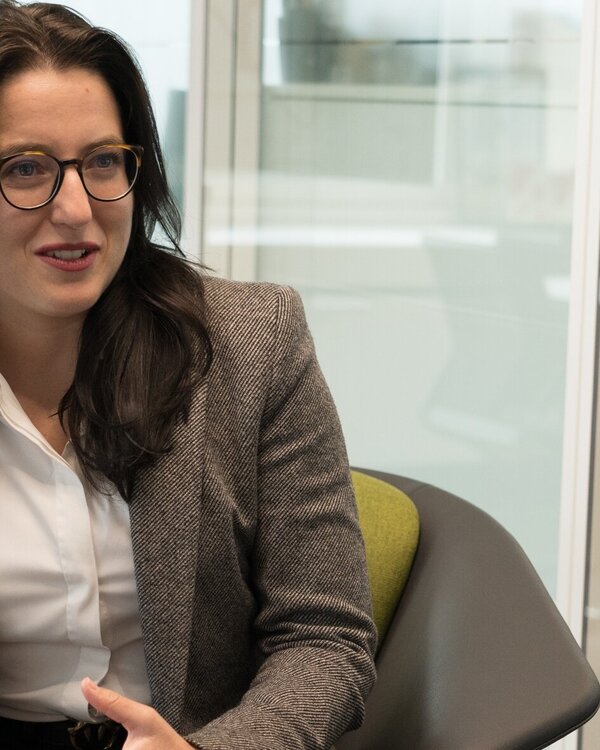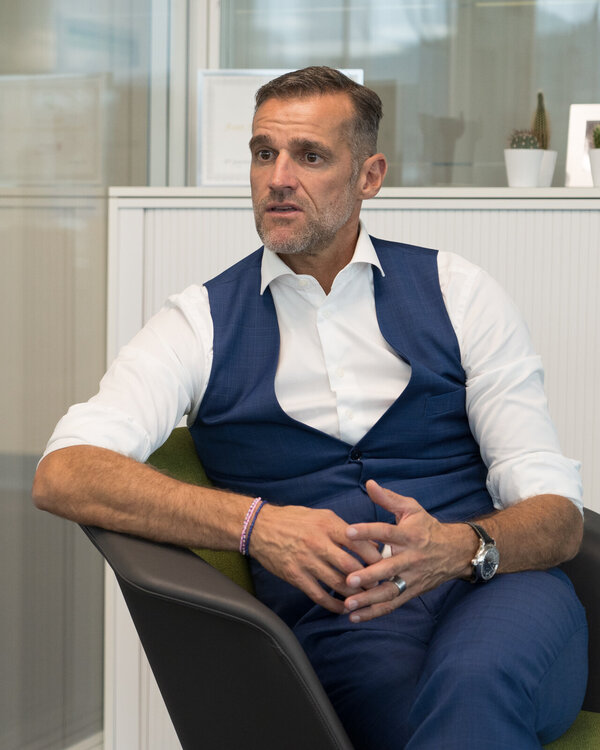"The higher costs of active management have paid off for policyholders"
Following significant losses in 2022, Swiss pension funds have been performing better again so far this year. Francesca Pitsch, Study Director of the Swisscanto Pension Funds Study, and Iwan Deplazes, Head of Asset Management, explain why the current economic situation does not permit a hasty interest rate adjustment and how the choice of asset allocation influences costs.
Interview with Iwan Deplazes and Francesca Pitsch

For the first time in 20 years, inflation eroded the interest on pension funds in 2022 and caused a real interest loss for policyholders. What do policyholders have to prepare for this year?
Iwan Deplazes: Based on current observations, 2022 is likely to be an outlier. The rapid cycle of interest rate hikes had caused the valuations of equities and bonds to plummet at the same time. Together with high inflation rates, we saw negative real interest rates for the first time in 20 years in 2022. In contrast, equity markets performed remarkably well during the first half of 2023 – even against the backdrop of a globally impending recession.
Francesca Pitsch: The rise in the cost of living, which was relatively modest here in Switzerland when compared to other countries, has slowed down in the last six months. However, this can quickly change again when you see the electricity and gas price increases announced recently. According to the Swisscanto Pension Funds Monitor, Swiss pension funds are likely to have generated cumulative returns of 4.1 percent on average in the first half of 2023 (excluding costs).
In Switzerland, the Occupational Pension Funds Commission (BVG-Kommission) has recently recommended raising the minimum interest rate to 1.25 percent to take account of the increase in inflation. What do you think about this?
Francesca Pitsch: Trade unions have actually called for 2 percent or more. The current proposal is a political compromise. The Swiss Federal Council will now set the minimum interest rate. The interest environment for new investments by pension funds has noticeably improved – at least the yields of Swiss government bonds are above the required minimum interest rate again.
Iwan Deplazes: The positive signs must not obscure the fact that the financial markets continue to fluctuate between concerns about inflation and recession. In view of the looming economic cooling in Switzerland and the major economic regions – especially in the USA – and the related situation on the financial markets, great caution is still required. Pension schemes must first build up their reserves again. The difficult investment year of 2022 has highlighted how important they are.
In 2024, the current reform to occupational pension law and consequently the cut in the conversion rate from 6.8 to 6 percent will be put before the electorate. Is this step even needed in view of the turnaround in interest rates?
Francesca Pitsch: Yes. The cut is necessary mainly due to higher life expectancy. Saved capital simply has to last for longer. Even a conversion rate of 6 percent is still far too high due to the current market interest rates – but the gap between this and the mathematically correct rate, which ranges between 4.8 and 5.2 percent depending on the calculation applied, is narrowing.

Active and passive solutions are justified and their use should be based on the individual needs of pension funds.
Francesca Pitsch, Study Director of the Swisscanto Pension Funds Study
Francesca Pitsch
Francesca Pitsch took over as Study Director of the Swisscanto Pension Funds Study at Zürcher Kantonalbank in November 2022. Prior to that, she worked at the Swiss National Bank in the area of financial market analysis and quantitative risk management at EY in Zurich. She holds a master's degree in Quantitative Economics and Finance from the University of St. Gallen.
A common criticism of the second pillar is that asset management consumes a large proportion of the returns for policyholders. In 2020 alone, the management of pension assets cost around CHF 5.1 billion. For comparison, the Old Age and Survivors' Insurance (OASI) compensation fund gets by with around CHF 220 million. Are asset managers too expensive?
Iwan Deplazes: No, asset managers are in competition and have long considered cost-effective solutions for implementing pension fund strategies. In this discussion, it is often forgotten that the OASI fund was managing assets of almost CHF 50 billion at the end of 2021, while the second pillar had many times that amount, with around CHF 1,100 billion. In absolute terms, the management of these assets results in a significantly higher expense. This is usually followed by a call for passive – ostensibly cheaper – investment instruments.
Francesca Pitsch: Active and passive solutions have their merits and their use should be based on the individual needs of pension funds. According to the data from the Swisscanto Pension Funds Study, the share of assets with regard to indexed investments in pension funds amounts to an average of 30 percent.

Pension funds with a larger proportion of alternative investments achieved a significantly better result.
Iwan Deplazes, Head of Asset Management at Zürcher Kantonalbank
Iwan Deplazes
Iwan Deplazes has been Head of Asset Management at Zürcher Kantonalbank since 2007. As a result of the merger with Swisscanto Asset Management, Zürcher Kantonalbank became Switzerland's third largest asset manager with assets under management currently exceeding CHF 208 billion (as at 31 December 2022). Deplazes has been President of the Asset Management Association Switzerland (AMAS) since 2020. He is also responsible for the Swisscanto Pension Funds Study.
What is the argument against an even higher share of index-linked investments?
Iwan Deplazes: A passive strategy is not entirely sufficient for the implementation of certain investment themes. Consider the issue of sustainability, for example. We are convinced that integrating aspects of sustainability will prove to be a performance driver of the future. Active fund management not only takes into account past developments and current trends, it is also geared towards the opportunities of the future. The level of costs therefore depends primarily on the type of investment mandate and the corresponding investment class.
Can you give an example?
Francesca Pitsch: In 2022, Swiss pension funds allocated around a third of assets to real estate and alternative investments. Thanks to this broad diversification across all asset classes, pension funds achieve more stable returns in the long term. This justifies the fact that the fees for private equity and real estate investments are somewhat higher.
Why is that?
Francesca Pitsch: The two asset classes require active management. Due to market access and the illiquidity of the asset classes, the use of passive instruments is barely feasible here. In addition, many pension funds have invested directly in real estate.
Iwan Deplazes: This diversified commitment pays off, as shown by the last two years when many pension funds suffered greatly. Pension funds with a larger proportion of alternative investments achieved a significantly better result. An evaluation of the Swisscanto Pension Funds Study has shown that the higher costs incurred as a result have paid off for the policyholders.
Do higher costs result in higher profits?
Iwan Deplazes: Unfortunately, it's not that simple. However, policyholders' money should be as highly diversified as possible and invested according to the individual risk capacity of the pension funds. This has a significant impact on costs. The decisive factor for pension funds and the insured members is ultimately the return – after the deduction of costs.
The Swisscanto Pension Funds Study
The annual Swisscanto Pension Funds Study is a reliable source of information for all pension funds. For more than 20 years, it has provided valuable insights into the second pillar, analysing the returns of Swiss pension funds and comprehensively presenting their current condition.
The current study was able to determine surprisingly robust results given the market pressures. Following the study, the ongoing recovery continued with the support of stable market developments.
This interview was first published in SPHERE Magazine on 23 October 2023.
